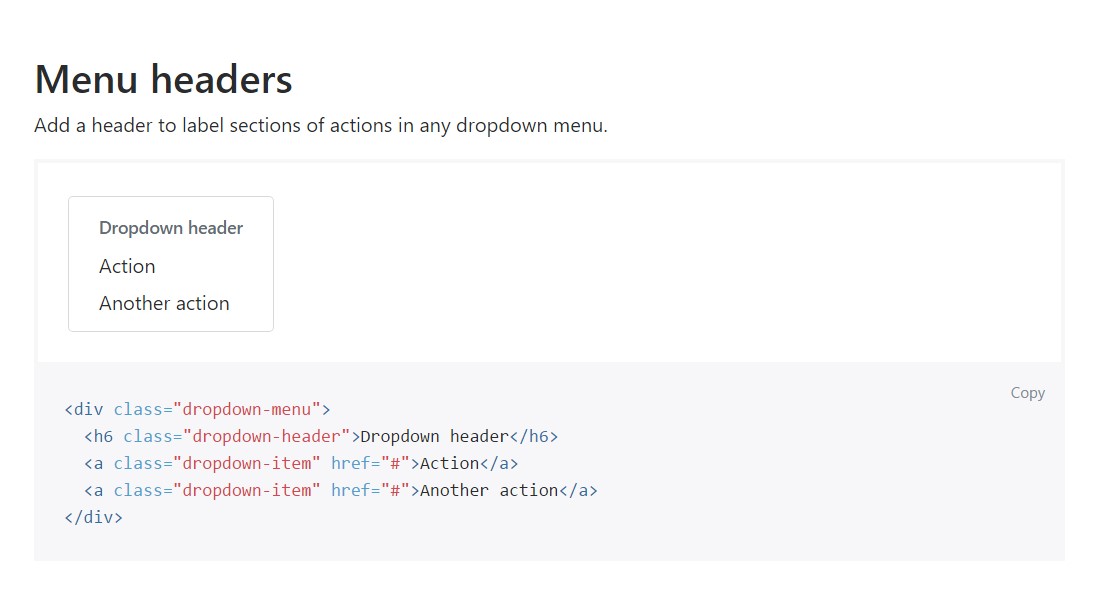Bootstrap Header Class
Introduction
As in published documents the header is one of the highly necessary components of the web pages we make and receive to operate every single day. It safely and securely possesses one of the most necessary information on the identity of the organization or individual responsible for the web page itself and the importance of the whole internet site-- its navigation system which together with the Bootstrap Header Class itself ought to be thought and create in this sort of means that a website visitor rushing or not really actually realizing what way to go to simply take a view at as well as discover the wanted information. This is the best circumstances-- in the real world getting as near as feasible to this appearance and activity also proceeds considering that we almost each and every moment have some project specified limitations to think of. In addition as opposed to the written files on the planet of internet we should really always remember the range of possible gadgets on which our pages could probably get featured-- we must assure their responsive behavior or else in other words-- make certain they will show optimal at any display screen size achievable.
In this way why don't we have a look and discover just how a navbar gets created in Bootstrap 4. ( helpful hints)
The ways to make use of the Bootstrap Header Form:
Initially if you want to create a webpage header or since it gets regarded in the framework-- a navbar-- we require to wrap the entire item inside a
<nav>.navbar.navbar-toggleable- ~ screen size ~.bg-*.navbar-light.navbar-lightWithin this parent feature we need to start off by applying a button component which in turn shall certainly be used to present the collapsed information on a smaller display screen sizes-- to achieve that set up a
<button>.navbar-toggler.navbar-toggler-left.navbar-toggler-righttype = " button "data-toggle ="collapse"data-target = " ~ the collapse element ID ~What is truly bright fresh for recent alpha 6 release of the Bootstrap 4 framework is that within the
.navbar-togler<span>.navbar-toggler-icon<a>.navbar-brand<div class="img"><img></div>Now-- the fundamental component-- developing the collapsible container for the primary site navigation-- to do it generate an element by using the
.collapse.navbar-collapseid =" ~ same as navbar toggler data-target ~ ".collapse<ul>.navbar-nav<ul><li>.nav-item<a>.nav-link.nav-item.nav-link.nav-item.dropdown<li>.dropdown-toggle.nav-link.nav-item<div>.dropdown-menu.dropdown-itemSome example of menu headers
Add in a header to label parts of activities into any dropdown menu.
<div class="dropdown-menu">
<h6 class="dropdown-header">Dropdown header</h6>
<a class="dropdown-item" href="#">Action</a>
<a class="dropdown-item" href="#">Another action</a>
</div>Other options
Yet another new thing for this particular edition is the option to fit an inline forms in your
.navbar.form-inline<span>.navbar-textConclusions
The moment it approaches the header materials in the current Bootstrap 4 version this is being looked after with the installed Collapse plugin and several site navigation certain material classes-- a number of them created primarily for maintaining your label's identification and various other-- to get certain the actual webpage navigating system will display best collapsing in a mobile style menu when a indicated viewport size is reached.
Inspect a number of video information relating to Bootstrap Header
Connected topics:
Bootstrap Header: authoritative documents

Bootstrap Header short training

Bootstrap 4 - Navbar Header application

